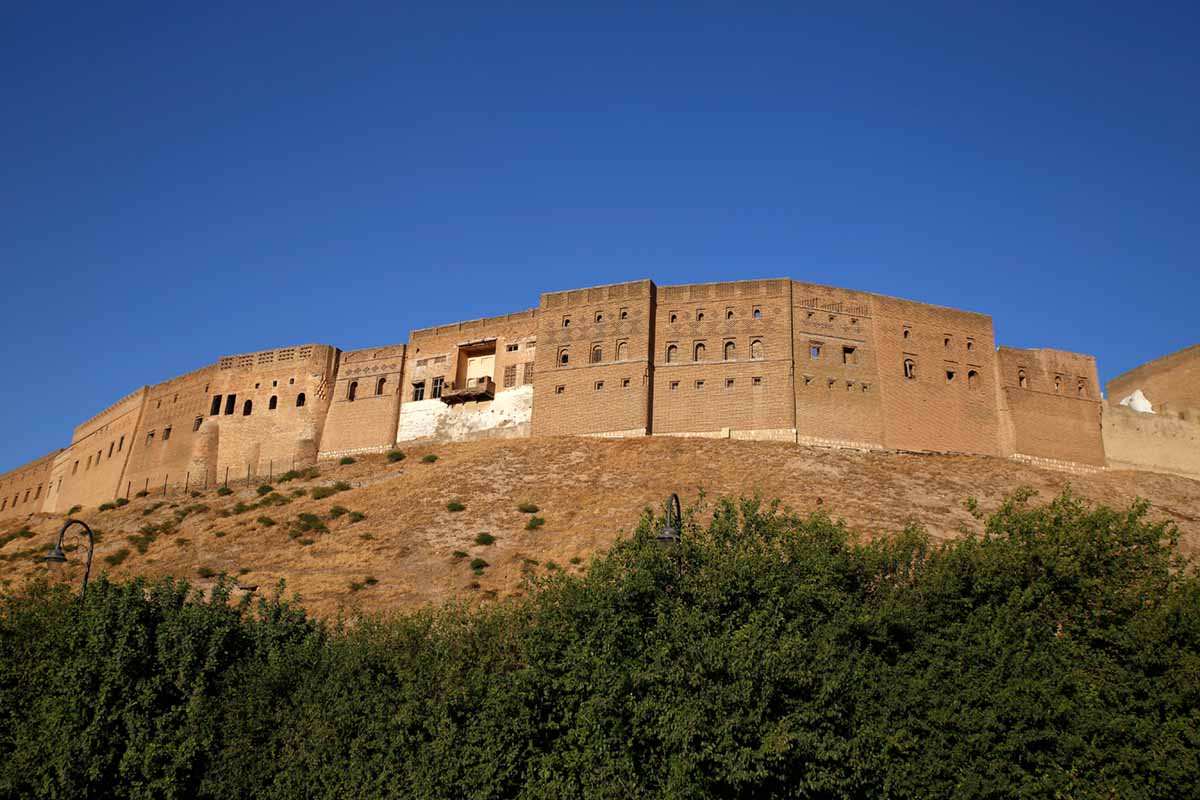
Hadani Ditmars visits Erbil, Iraq’s ancient city, to find restoration and heritage projects in full swing
Words and images by Hadani Ditmars
The Citadel, floating like a magic castle on the Erbil skyline, draws me in. At the centre of historic Erbil, the ancient site’s gravitational pull made it the civic sun around which subsequent urban sprawl orbited. Indeed, the historic core around the old citadel has grown exponentially since 2003. Now whole new neighbourhoods populated by the displaced emanate in concentric circles from the 6,000-year-old fortress. Clutching my old Iraqi tourist guide from the 1980s that I carry like a talisman, I take a taxi from Ankawa to visit the UNESCO World Heritage site, where a new visitor’s and interpretation centre have recently opened.
As I cross Erbil, full of half-finished towers, I consult my guidebook to learn that the city was ‘one of the oldest towns in continuous habitation in Iraq, first mentioned in the cuneiform records of the Sumerian King Shulgi in 2,000 BC and called Arba Elu (‘four gods’) by the Babylonians and Assyrians’. While today, the only Assyrian town that has remained inhabited and kept its original name over the centuries has two main political gods – the Barzani and Talabani clans – it still bears its ancient moniker.
Like many historic sites in Iraq and indeed in the region, its diverse history has been usurped and claimed as a symbol of narrow, sectarian nationalism by Kurdish leaders. Still, as I walk up the steeply graded hill that leads to its main entrance, overlooking Erbil’s old city, my ascent is literally a journey through history.
The world’s oldest continually inhabited human settlement was built on archaeological layers crowned by Ottoman era houses. It has been the site of a temple to Ishtar, as well as an important centre of Nestorian Christianity. It survived a 3rd century BCE battle between Alexander the Great and the Persian King Darius, a 12th century Mongol invasion, as well as an 18th century siege by Nader Shah, not to mention the excesses of Saddam Hussein’s reconstruction efforts in the 80s. It has been home to the Medians and the Assyrians (who called it Arbela), Muslims and Jews, and has housed Sufi shrines and displaced squatters, its mound-like form shaped by successive generations of inhabitants and invaders who simply built on the rubble of their predecessors. Its Southern Gate, offering a spectacular view of the city below, has now become a popular spot for honeymooners and tourists. As I reach its summit, I notice a gaggle of Syrian refugees happily posing for a group selfie.

It was finally inscribed as a UNESCO World Heritage site in 2014, after seven years of meticulous documentation and preparation lead by Dara Yakubi, head of the HCECR (the High Commission for Erbil Citadel Revitalization) and May Shaer, a consultant for the UNESCO World Heritage Centre. The necessary work to fulfil the requirements to nominate the citadel for world heritage status involved preparing a management plan, a comprehensive survey of all 330 historic houses, as well as all the layers of the built heritage of the citadel and its relationship to the urban fabric of the city. This was no mean feat, as the Erbil Citadel, the fourth site from Iraq to be included in the World Heritage List, after Ashour, Hatra, and Samarra Archeological city, sits atop a 32-metre-high mound and fans out over 10 hectares of traditional courtyard houses built of oven-fired brick, with distinctive ornate patterns, as well as a mosque, hammam and other historic sites.
But history, as they say, has a funny way of repeating itself. Success was timed perfectly for the invasion of Daesh (Islamic State). While the peshmerga succeeded in saving Erbil from the newest horde, the economic crisis that engulfed the whole region took its toll on rehabilitation efforts.
Reinvigorated restoration
When the 2014 Daesh invasion and subsequent financial crisis quashed funding from the Kurdistan Regional Government, it was a race against time to preserve all the hard work already carried out and continue restoration of the citadel. There was a spurt of activity from 2018 to 2020, soon dampened by a global pandemic, but luckily not before the US embassy funded repairs to the old hammam close to the North Entrance, as well as a complex of three houses that would become an interpretation centre for children via the World Monument Fund.
In these turbulent times, we’re committed to telling expansive stories from across the globe, highlighting the everyday lives of normal but extraordinary people. Stay informed and engaged with Geographical.
Get Geographical’s latest news delivered straight to your inbox every Friday!
The French government was one of the early investors in rehabilitation projects, with their restoration of the Shihab Chalabi house (begun in 2011), whose alabaster archways now herald the entrance to the offices of IFPO (Institut Francais du Proche Orient). It’s located in a cluster of seven villas belonging to the Chalabi brothers, including the Saleh Chalabi house now home to the Erbil Citadel Cultural Centre that hosts performances and art exhibitions adjacent to a 1930s house repurposed as the Kurdish Textile Museum.
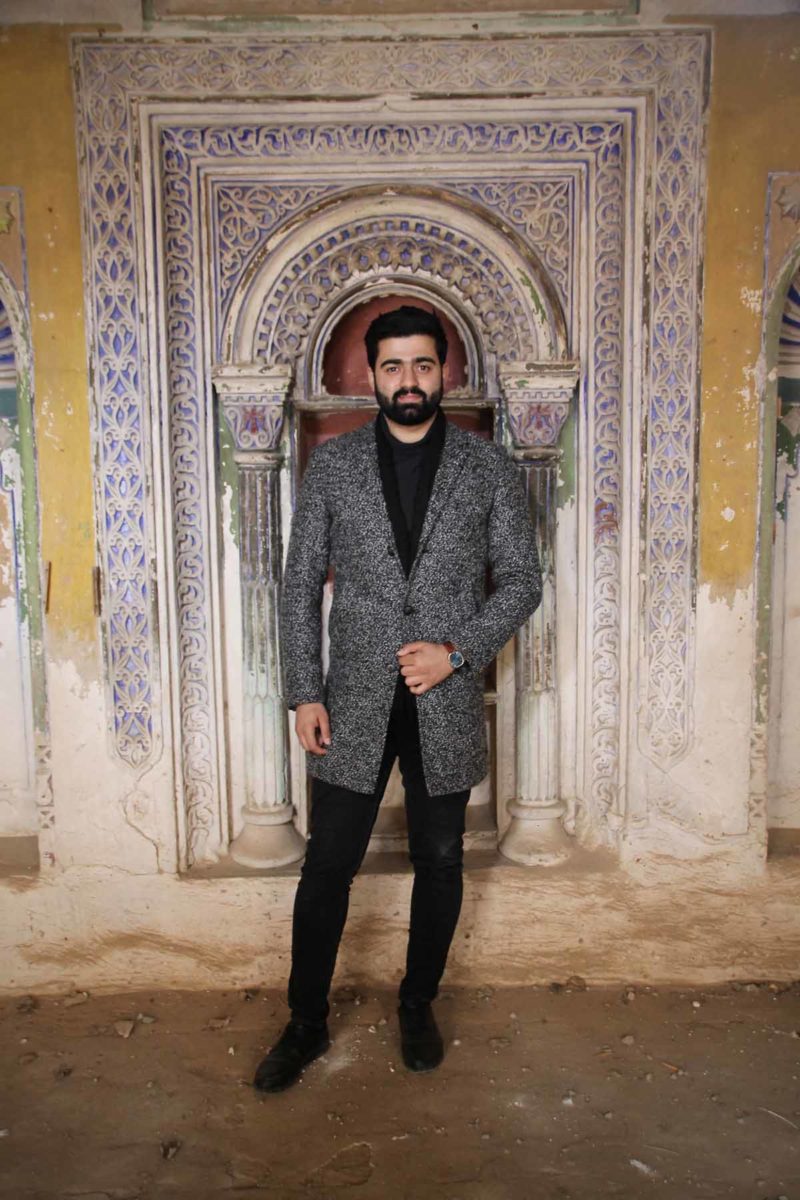
Things really started to look up for the project in the fall of 2019 when the EU signed an agreement with UNESCO and the HCECR for a five million Euro contribution for the rehabilitation of historic buildings in and around the citadel, support for cultural activities and training in heritage management and tourism to generate employment opportunities for the local community, internally displaced Iraqis, and refugees in conjunction with the Madad programme, aimed at helping the Syrian people. Then in November of 2019, the prime minister of the Kurdistan region, Masrour Barzani, visited the citadel and pledged a yearly donation of $500,000 USD to be used for conservation, management and administration.
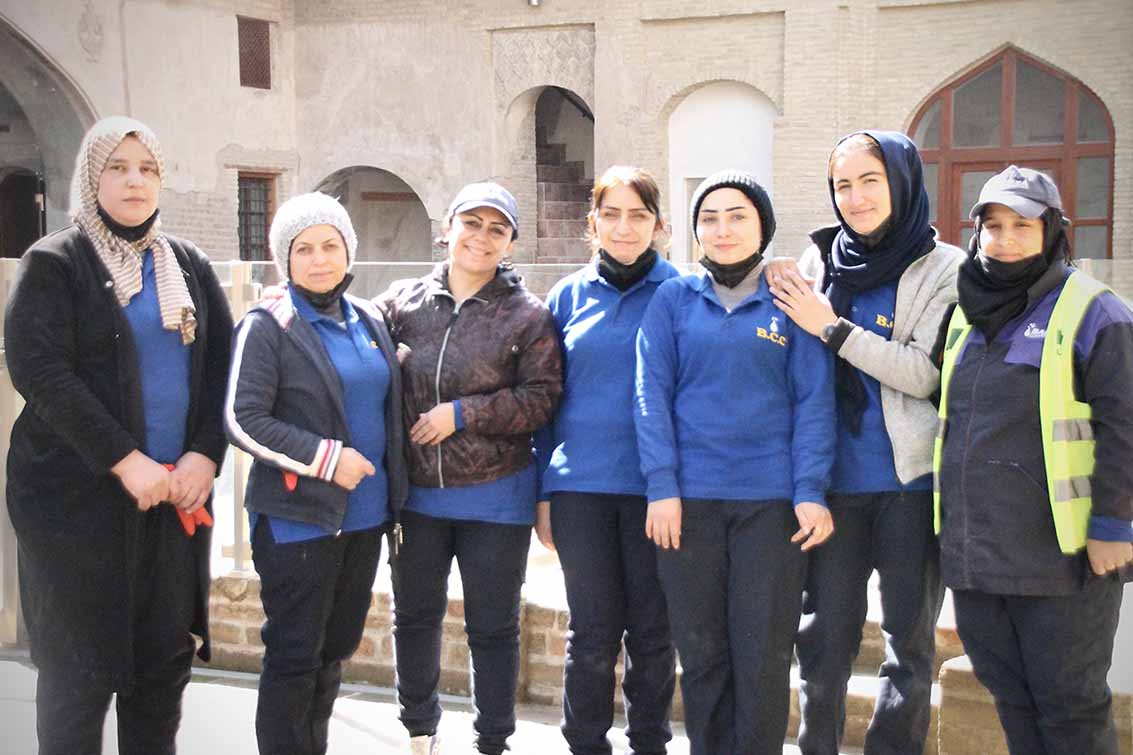
This past March, two big UNESCO funded projects opened to enthusiastic reviews, just a few days after 12 Iranian ballistic missiles landed in a residential neighbourhood of Erbil. But the Citadel, as ever, took it all in stride. The long-awaited interpretation centre, converted from the Yaqub Agha Ottoman era villa, is a wonderful combination of heritage conservation, education, and state-of-the-art technology. As designed by Czech firm Gemaart, the centre is a moveable feast of 12 different rooms that connect past and present. Using multimedia tools, exhibitions include interactive timelines to browse through the ages, virtual keyboards that translate text into cuneiform, and touch screens that show writing – dramatised by actors – and artwork produced by travellers to the citadel in the past centuries. Sound and light shows evoking historical architectural features and slide shows documenting the restoration work and archaeological digs done to date augment the experience, as does a touch screen with headphones allowing visitors to discover traditional Kurdish music.

Both buildings, as well as several historical houses, were restored by workers employed by UNESCO via the Madad programme, including displaced Iraqis, Syrian refugees as well as local people. An intrepid team of cleaning ladies, mainly displaced Iraqi women and Syrian refugees, are being trained and employed under the Madad programme in the fine art of heritage cleaning. ‘No heavy detergents,’ a Syrian Kurdish woman who fled her homeland five years ago tells me, after I inquire as to the secret of the art.
With ambitious plans underway for up to 20 per cent residential use for government workers as well as new cultural tourism infrastructure including art galleries, cafes, restaurants, and boutique hotels, there is still more to come.
The Kurdish Textile Museum
A few hundred metres away from the visitor’s centre, tucked away in a refurbished Ottoman era villa, the Kurdish Textile Museum also welcomes guests. This treasure trove of tribal rugs and folk art is a popular cultural tourism destination for visitors from within Iraq and beyond its borders, but it it’s also a place to read secret code. Not the kind that saved Britain in WWII, but the secret textile language that has been passed down for generations by nomadic weavers. Luckily, as I enter the three-storey gallery space, there is a signpost that helps decipher the meaning behind the rich array of symbols that adorn the world’s largest collection of Kurdish textiles, acquired over decades by museum director Lolan Sipan.
This chart of prehistoric symbols and motifs of Kurdish textiles begins with the eight-pointed star – Ishtar or Heshtar in Kurdish. I learn that this shapeshifting motif can appear as star, a flower, or a more abstract geometric shape. Its origins are linked to both Ishtar, the Babylonian goddess of love as well as the symbol of Teshup, the ancient weather god of the Hurrians, a Bronze Age polytheist mountain people. The traditional Kurdish medallion or gul is also highlighted. A large motif usually repeated down the centre of the textile, guls are four, six or eight-sided geometric shapes bordered by hooks that contain talismanic symbols. The larger hooked octagon motif is known as the ‘wolf’s mouth’ while the smaller medallion is known as the ‘ram’s horn’. Some guls are tribal identifiers, such as the colourful motifs representing the herki and serchi tribes. Other symbols included birds, horses, boats, the sun, the tree of life, and even the swastika – an ancient symbol with a Sanskrit name. A triangle with three or four tassels dangling from its lower edge, also worn as jewellery, was the Mesopotamian symbol for good fortune.

While the textile museum seems a success, with dozens of visitors filling its galleries, the culture of the nomads who produced the carpets on display is at risk. Director Lolan Sipan, who opened the museum in 2004 with assistance from the Ministry of Culture, after returning to Erbil after many years in Sweden, spent two decades on research field trips to tribal Kurdish areas, collecting over a thousand rugs and textiles and storing them in his family home in Erbil.
‘It was very important for me to preserve and promote traditional Kurdish textiles,’ the grey haired Sipan tells me. ‘If I hadn’t done this, we would have nothing left today in Kurdistan. Thousands of pieces have been taken out of the country by Turkish and Iranian collectors.’
In these turbulent times, we’re committed to telling expansive stories from across the globe, highlighting the everyday lives of normal but extraordinary people. Stay informed and engaged with Geographical.
Get Geographical’s latest news delivered straight to your inbox every Friday!
In addition to the export of such important Kurdish patrimony, assaults on the traditional nomadic lifestyle have also taken their toll, he explains. ‘The nomads had to deal with Iranian and Turkish bombardment and landmines from the Iran/Iraq war. Saddam Hussein relocated the tribes to the southern part of Iraq to collective towns and they were forced to abandon their nomadic lifestyle,’ one that he notes included using the wool from their sheep and the dyes from mountain flowers for their rugs and textiles. ‘Unfortunately,’ he says with great understatement, ‘this has meant the destruction of their culture. I felt I had to do something immediately – to preserve and document as much as I could – before it all vanished. You could see the process of how fast this traditional way of life and textile production was disappearing.
‘There are hundreds of different kinds of textiles,’ he adds with an almost evangelical zeal. ‘Tribal peoples employed them for daily uses and every single item has its function,’ he explains, pointing out a saddle bag, a baby carrier, a mattress on display – as well as ‘some that are just for aesthetic appeal’.
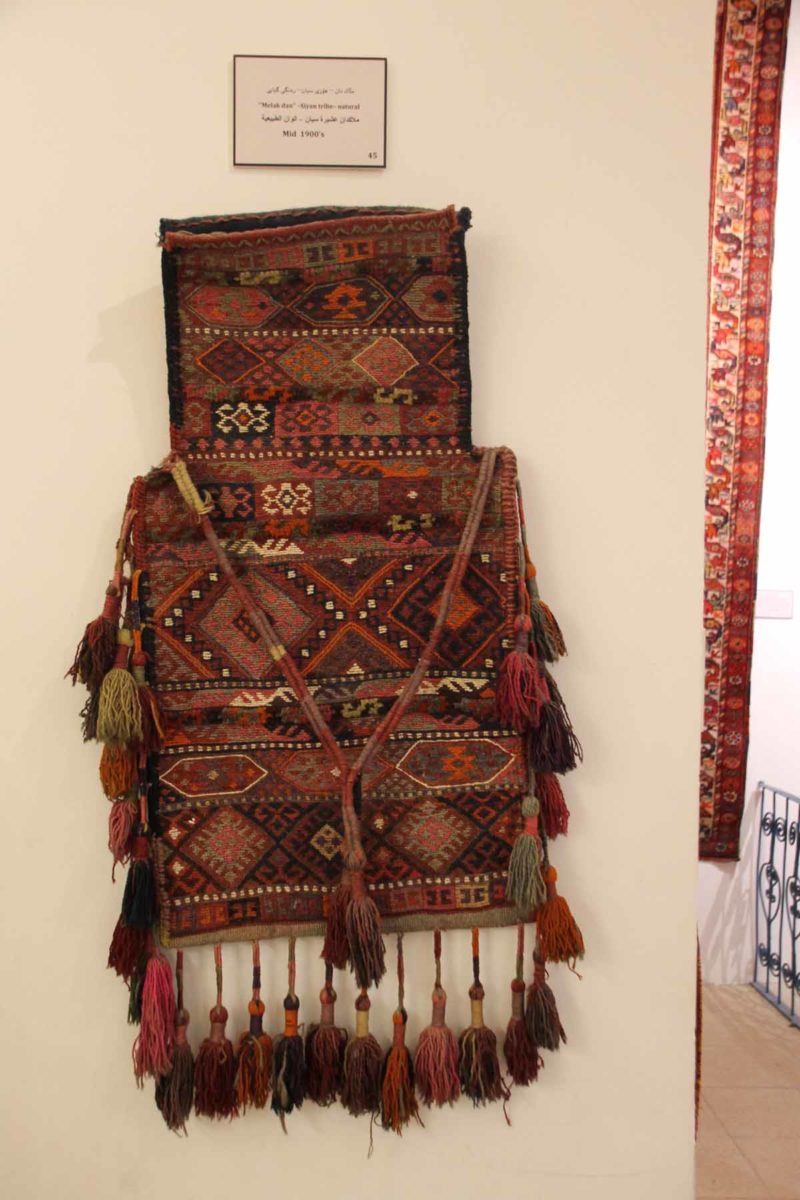
The latter is exemplified in a fascinating textile hung close to the director’s office, depicting the ‘queen of the serpents’ called Shahmaran. Her legend is one part Medusa and one part Scheherazade and comprised a love affair with a traveller man named Tasmasp, who was seduced by her stories. When she had no more to tell, he returned to his own land, only to find his king had fallen ill. One of the king’s advisors suggested that the only cure was to devour Shahmaran, who soon found a way to protect her lover and fool the advisor. She tricked him into believing that her head, and not her scales, were the poisonous bits, when in fact the reverse was true. To this day, images of Shahmaran are hung in marital bedrooms to ensure fertility and happiness. While the threats to traditional nomadic culture are real, the Kurdish Textile Museum offers a refuge of sorts, where like Shahmaran, carpets and folk art can continue to seduce travellers.
I chat with some Arabic speaking visitors from Baghdad in the old villa-turned-gallery with soaring ceilings and intricate woodwork. The Baghdadis tell me they love the museum because it’s an expression of their ‘Iraqi heritage’. Then I meet a Kurdish man from Dohuk who says the museum is an important symbol of Kurdish nationalism. In fact, this place of layered histories is often claimed by the Kurds – but the reality is more complex. The ‘new’ Kurdistan is now a de facto refuge for Arabs, Kurds, Muslims, Christians and Yezidis. And the citadel itself, where Syrian refugees help with the rebuilding of Ottoman era houses in a new UNESCO and EU funded programme, is more nuanced than any simplistic nationalism, however enthusiastically exploited.
The National Kurdish Music Archive
While the citadel is the world’s oldest continually inhabited settlement, its cultural richness is musical as well as archeological, with melodious layers of history embedded in its ancient earth. The multicultural nature of the citadel is reflected in the music that emerged from it – a heady mix of Kurdish, Arabic, Turkoman, and Jewish and Muslim heritage.
‘Everyone lived here together in harmony,’ says Amjad Assad, who runs the National Kurdish Music Archive out of a single room in a repurposed Ottoman era courtyard house crammed with cassettes, old 78s and even a gramophone. First established by his grandfather in 1952 in the old city bazaar, the archive that still has the feel of a souk, relocated to the citadel in 2017. It was a labour of love for Assad, who has single handedly digitised thousands of cassettes and old 78s that span a century of musical history. Some of his precious archive is featured in the new interpretation centre.
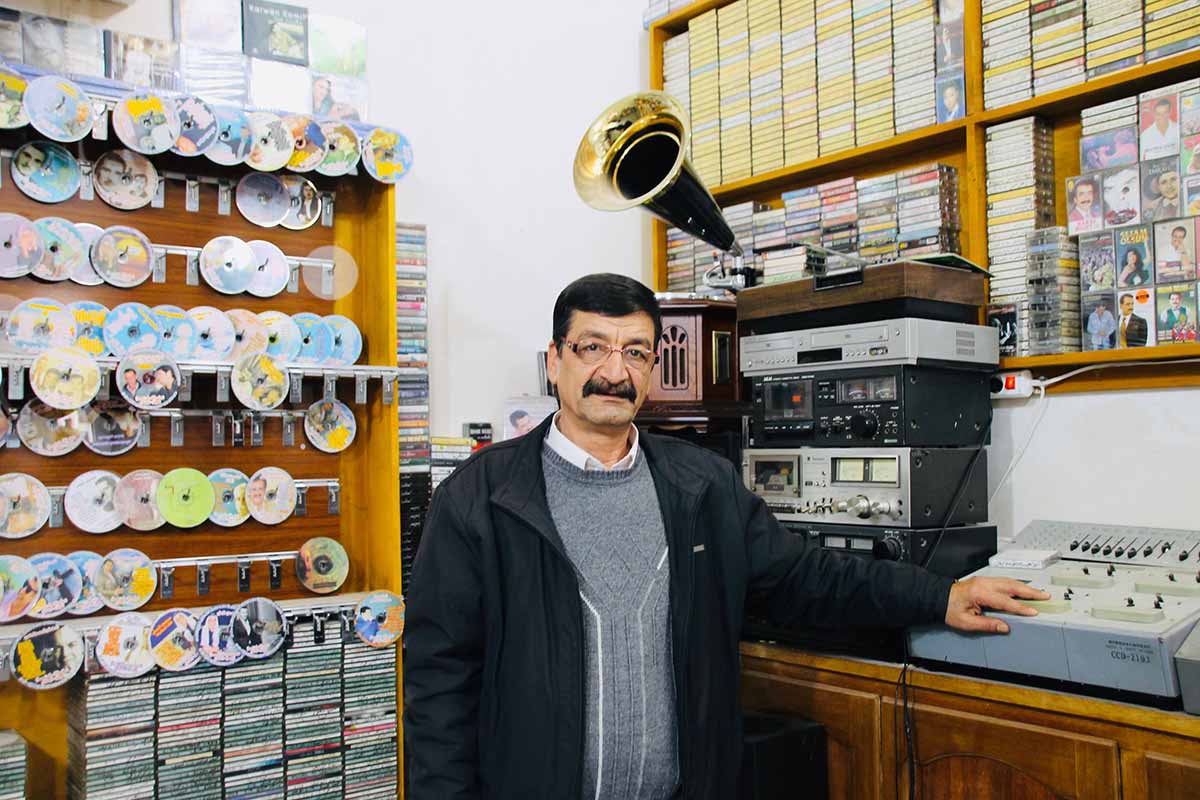
Assad grew up in Erbil and remembers his mother lamenting the loss of their Jewish neighbours who left in 1948. I soon learn that the maternal grandmother of Hannah, my Turkoman translator, was Jewish and lived near the Sufi mosque in the old city, part of the citadel’s buffer zone. Assad’s mission to keep the archive alive was made more urgent by the fact that many of the songs he had preserved, documented, and recorded were banned under the old regime.
In these turbulent times, we’re committed to telling expansive stories from across the globe, highlighting the everyday lives of normal but extraordinary people. Stay informed and engaged with Geographical.
Get Geographical’s latest news delivered straight to your inbox every Friday!
‘Under Saddam Hussein’s government,’ he tells me, ‘Jewish songs were forbidden and buying and selling them was a crime punishable by death.’
As preservation and rehabilitation work on the Erbil Citadel continue, its importance as a cultural centre grows, with new galleries planned and an active schedule of local and international performances at the outdoor amphitheatre near the South Gate
By chance, one is happening today. A concert of traditional Kurdish music is just about to begin, and I quickly take a seat next to a French tourist, a retired archaeologist on a journey through Kurdistan. Dressed in modest attire and sensible shoes for climbing the tell (the mound below the Citadel) and tromping through construction zones, I brush the dust off my jacket as an entourage of important men turn up and sit next to me. My new seating companions turn out to be the Kurdish minister of culture and the governor of Erbil. Behind us, dozens of local families, refugees, and visitors eagerly await the programme, whilst taking selfies with the important men beside me.
One by one, a plethora of traditional singers – Kurdish and Turkoman – perform maqams, the classical songs of love and longing – accompanied by a traditional orchestra. Before I know it, I’m dancing a folkloric Kurdish circle dance with the woman next to me, live on Kurdish television. As the lively spirits of 6,000 years of civilisation keep watch, I stomp my feet and shake my shoulders in celebration of this special place, where past and present move together in a timeless choreography.
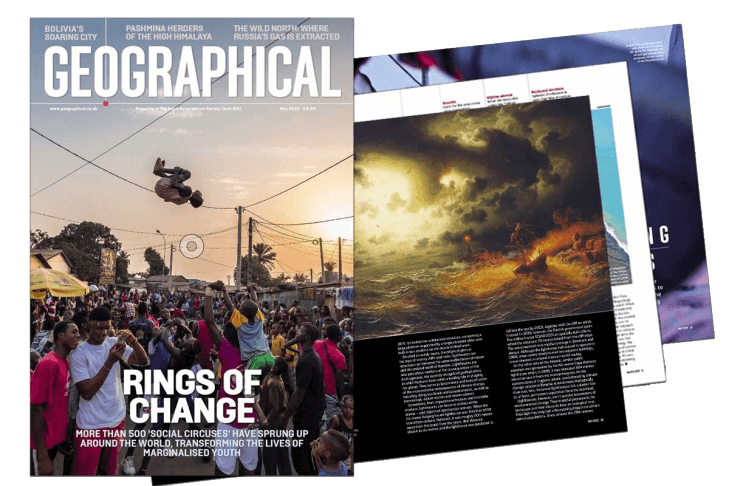
Subscribe to our monthly print magazine!
Subscribe to Geographical today from just £3.40 per month. Our monthly print magazine is packed full of cutting-edge stories and stunning photography, perfect for anyone fascinated by the world, its landscapes, people and cultures. From climate change and the environment, to scientific developments and global health, we cover a huge range of topics that span the globe. Plus, every issue includes book recommendations, infographics, maps and more!









